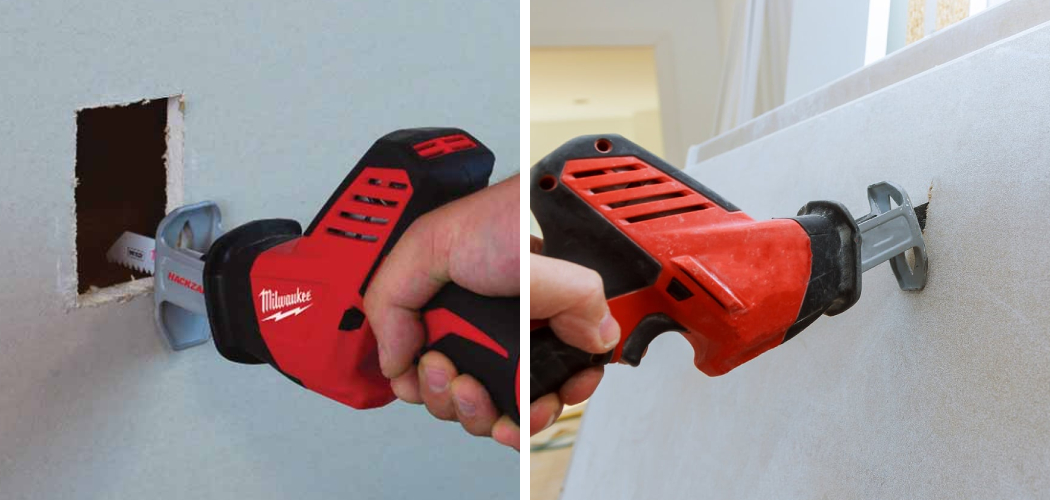Cutting drywall without dust is an important skill for DIYers and professional renovators alike. This is because cutting drywall can create a mess of tiny pieces of debris, which can cause respiratory problems when breathed in. Additionally, the fine dust created from cutting drywall can damage equipment and furniture and cause extra clean-up time and potential health hazards.
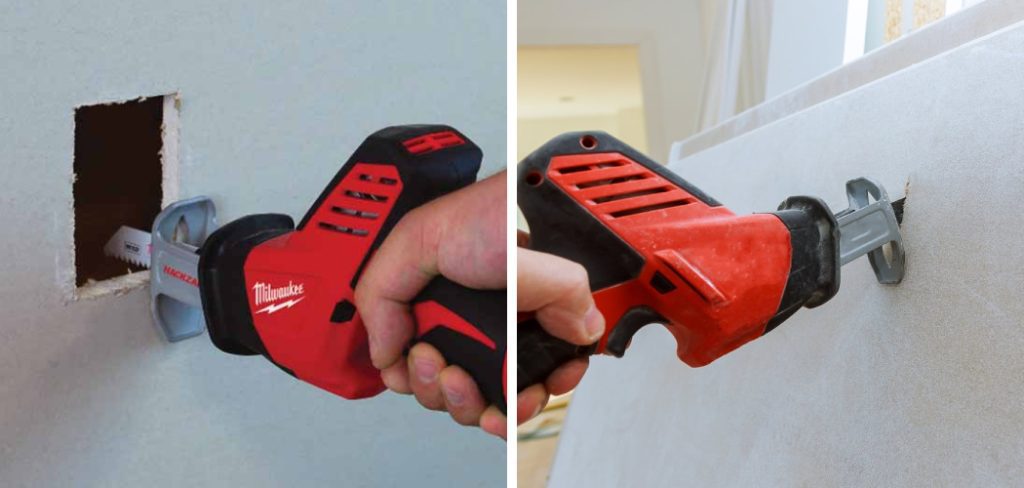
For several reasons, cutting drywall without creating a huge mess of dust is beneficial. One, it reduces the amount of time you need to spend cleaning up after making your cuts. Secondly, with less dust in the air, your home or workspace will remain cleaner and healthier. Finally, cutting drywall without creating an excess of dust makes it easier to take accurate measurements and stay on target during the process. In this blog post, You will learn in detail how to cut drywall without dust.
Tools You Will Need
When it comes to cutting drywall without making a mess, the right tools are essential. Here is what you will need:
- Circular Saw: A circular saw can cut through drywall quickly and efficiently; however, it does create dust. To keep your environment clean while using this tool, make sure to attach a vacuum hose directly to the saw.
- Utility Knife: Using a utility knife is one of the most effective ways to cut drywall without creating dust. Select a sharp blade and score along the desired line before snapping off any excess material.
- Jigsaw: Another great tool for cutting through drywall is a jigsaw. This handheld power tool is perfect for intricate cuts and creates less dust than a circular saw. As an added bonus, using a jigsaw can help you avoid any potential hazards from using a circular saw.
Step by Step Processes for How to Cut Drywall Without Dust
Step 1: Inspect the Area
Before cutting drywall, inspect the area and ensure it is free from clutter and debris. You will need a utility knife, an adjustable saw blade, goggles, a dust mask, a metal ruler or straight edge, protective gloves, and a vacuum cleaner with a brush attachment.
Step 2: Cut the Drywall
Using the utility knife, make a straight cut along the line you wish to cut. If needed, use a metal ruler or straight edge as a guide. Allow yourself plenty of time to get it right—drywall can be fairly hard to cut and requires patience and attention to detail.
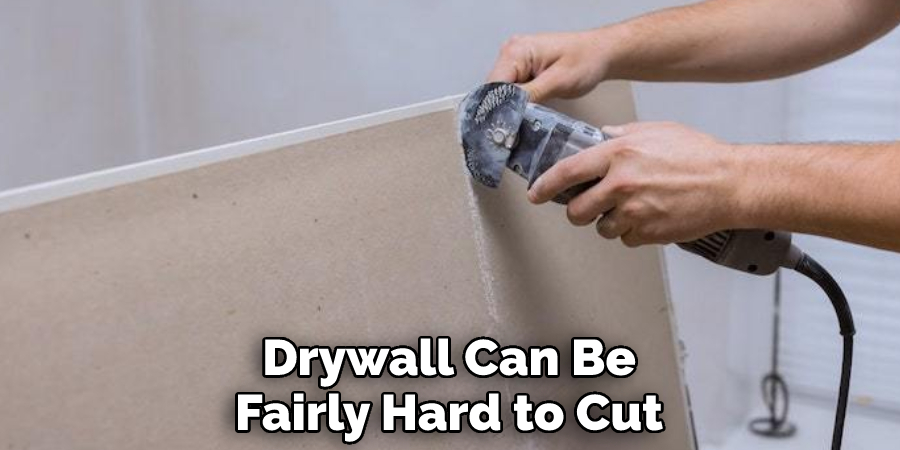
Step 3: Measure and Mark the Cut Line
Using a metal ruler, pencil or marker, measure and mark the cut line. This will serve as your guide for making sure your cut is straight. Be sure to double-check your measurements before cutting. Wear safety goggles and a dust mask to protect yourself from drywall dust. Put on protective gloves so that you do not experience any discomfort while cutting through the drywall.
Step 4: Set Up Vacuum Cleaner with Brush Attachment
Set up your vacuum cleaner with a brush attachment and turn it on. This will help to collect any drywall dust produced during the cutting process. Select an appropriate saw blade for your task. Depending on what type of drywall you are working with, you may need a different type of saw blade, such as a jigsaw or oscillating tool. Be sure to select the right saw blade for the job.
Step 5: Make the Cut
Place the saw blade onto the cut line and ensure it is securely in place. Holding the saw steady, begin cutting into the drywall. Move slowly but steadily along your marked line until you have completed the cut. Once the cut is complete, use your vacuum cleaner with the brush attachment to clean up any drywall dust. Be sure to move slowly and thoroughly over the entire area.
Step 6: Check the Cut Line
Once you have finished cleaning up the area, check that your cut line is straight and even. If there are any irregularities, use a utility knife to make adjustments. Finally, clean up the area and dispose of any drywall dust or debris in an appropriate container. You are now ready to move on to your next project.

Following these steps will help you cut drywall without creating any dust. Always remember to wear protective gear and clean up the area when you are finished. Cutting drywall can be messy, but following these steps will help make it easier and safer.
You Can Check It Out to Install Cement Tile
Safety Tips for How to Cut Drywall Without Dust
- Wear personal protective equipment such as safety glasses, dust masks, and gloves when cutting drywall to protect yourself from debris and dust.
- Cut the drywall outside with an electric saw if possible to avoid having any mess inside your home.
- Make sure you have a vacuum cleaner ready to clean up the dust created by cutting the drywall.
- Use a plastic or cardboard sheet to cover any furniture or other items near where you will be working and tap it in place if necessary.
- Consider using a circular saw with a dust collection attachment or an oscillating multi-tool with a dust extraction attachment to reduce the amount of dust created when cutting the drywall. This will help keep your workspace clean and free of dust.
How Should You Clean Up the Area After Cutting Drywall Without Generating a Lot of Dust?
Once you have finished cutting your drywall without generating a lot of dust, it is important to clean up the area properly. To minimize the amount of cleaning that needs to be done, later on, make sure to use a vacuum with a HEPA filter attached to collect as much of the drywall dust as possible before sweeping or wiping up the area. If possible, seal off or limit access to the room during and after cutting to contain the mess further.
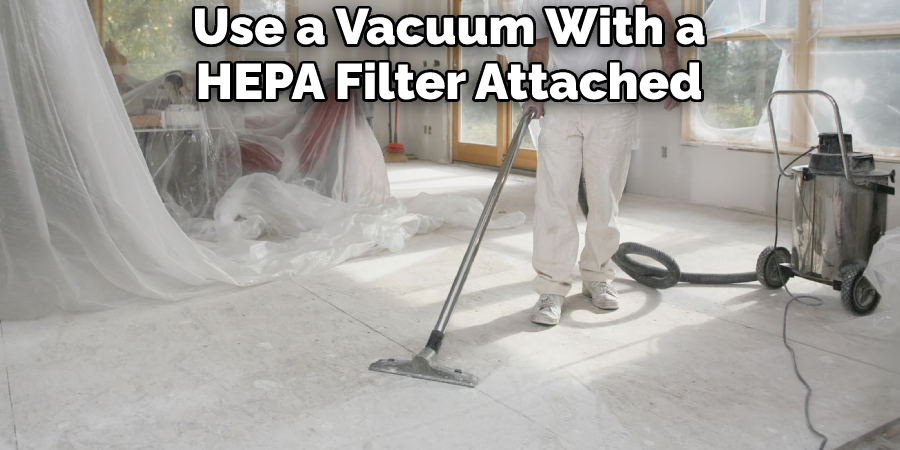
If you are using a power saw, such as a circular saw, remember to be sure that it has been turned off before beginning the cleanup process. Additionally, if you have used water while cutting, make sure that you dry the area completely to prevent mold and mildew from growing.
Once you have vacuumed up as much of the dust as possible, use a damp cloth or sponge to wipe away any remaining mess. This should help keep the air clean and free of potential allergens due to drywall dust particles. After this is done, it is a good idea to open some windows and let the area air out for a few hours.
Are There Any Additional Tricks for Cutting Drywall Without Creating a Lot of Dust?
In addition to using a drywall saw and vacuum, there are some other techniques you can use to cut drywall cleanly and with minimal dust. Try cutting your drywall outdoors if possible, as this will limit the amount of dust that is created. If you must cut your drywall indoors, try sealing off the room with plastic sheeting and using a fan to help keep the dust contained.
You can also place a wet rag or damp newspaper on top of the drywall before you start cutting, as this will trap some dust particles and prevent them from entering the air. You may also want to consider wearing protective eyewear, gloves, and a respirator when cutting drywall, as these will help protect you from inhaling any airborne particles.
Finally, consider using an oscillating multitool with a dust collection attachment to cut your drywall. This type of saw has a smaller blade that can be used for plunge cuts and other tight spaces, making it easier to control the dust created.
Is It Necessary to Call Any Professional to Cut Drywall Without Dust?
No, calling any professional to cut drywall without dust is unnecessary. However, if you are inexperienced with cutting drywall and want a neat and precise job, it may be best to consult a professional contractor. Additionally, if you have any doubts about the safety of using power tools to cut drywall without dust, then consulting a professional is the way to go.
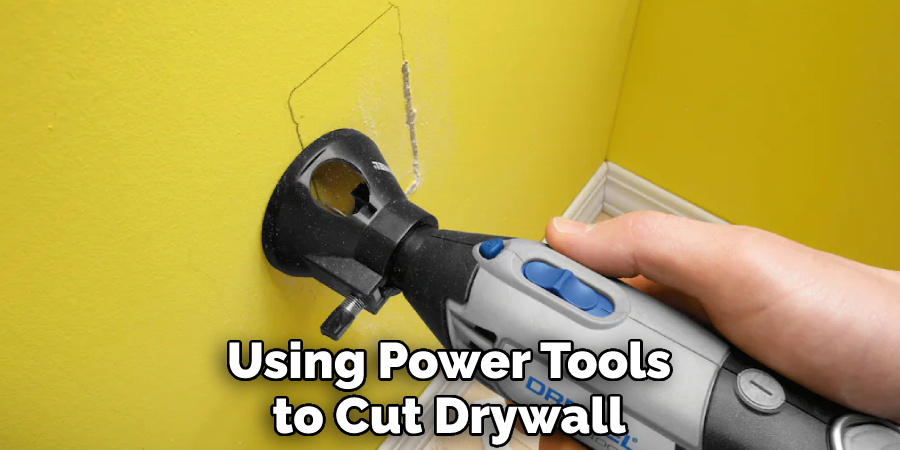
One of the most effective ways to cut drywall without dust is by using a power saw with a vacuum attached. This method will greatly reduce the number of airborne particles created during cutting and make your job much easier, as you don’t have to worry about manually sweeping up all the dust. You will also enjoy a cleaner, and safer space as the vacuum collects all dust particles instead of allowing them to float in the air.
How Much Will It Cost to Cut Drywall Without Dust?
The cost of cutting drywall without creating a lot of dust can vary depending on the tools and materials used. An electric drywall saw is often the least expensive option, with basic models costing in the range of $30 to $50. This type of saw typically uses a carbide-tipped blade that cuts through drywall quickly and cleanly and can be used to make straight or curved cuts. A more expensive option is a drywall router, which uses a vacuum attachment to collect the dust as it is created. Prices for this type of tool range from about $50 to $150.
Lastly, an oscillating multi-tool with a carbide-tipped blade can also be used, although it may take a bit more time to make the cuts. Prices for this type of tool vary greatly depending on the brand and quality, but they typically range from $50 to $150. No matter which tool you choose, be sure you have all the necessary safety gear, such as protective eyewear and dust masks.
Conclusion
Depending on the room and the amount of drywall you need to cut, it could take a while for all of the pieces to be accurately measured and cut. Additionally, using this method may require more tools than traditional cutting methods. For example, you may need an oscillating multi-tool, jigsaw, or even a router to get a clean cut without dust.

All of these tools can be expensive and might not be worth the cost for some people who don’t plan on using them for future projects. The process of cutting drywall without dust is not a one-size-fits-all solution and may require various tools and techniques, depending on the size and shape of the job.
Nevertheless, this guide has provided a comprehensive overview of the steps necessary to cut drywall while keeping your work area clean. To recap, start by shopping for the right tools and materials, including a drywall saw, utility knife, screwdriver, dust mask or respirator, eye protection, and a vacuum.
Then, ensure the area is well-ventilated by opening doors and windows and wearing protective gear. I hope this article has been beneficial in learning how to cut drywall without dust. Make Sure the precautionary measures are followed chronologically.
You Can Check It Out To Cut Concrete Wall for Door

